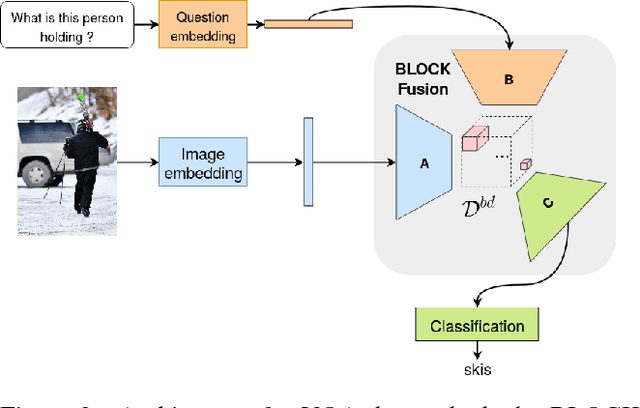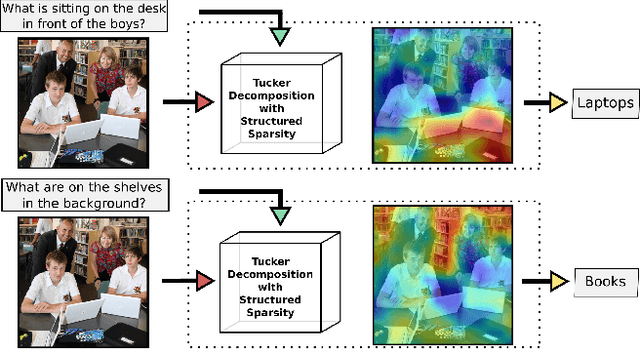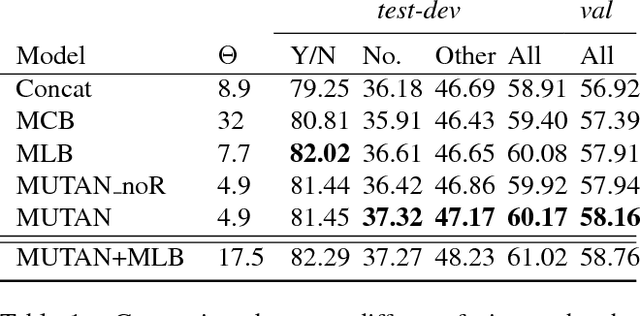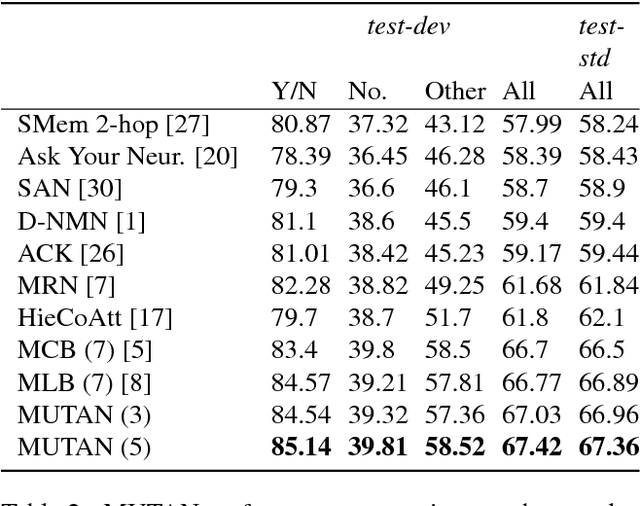Rémi Cadene
BLOCK: Bilinear Superdiagonal Fusion for Visual Question Answering and Visual Relationship Detection
Feb 12, 2019



Abstract:Multimodal representation learning is gaining more and more interest within the deep learning community. While bilinear models provide an interesting framework to find subtle combination of modalities, their number of parameters grows quadratically with the input dimensions, making their practical implementation within classical deep learning pipelines challenging. In this paper, we introduce BLOCK, a new multimodal fusion based on the block-superdiagonal tensor decomposition. It leverages the notion of block-term ranks, which generalizes both concepts of rank and mode ranks for tensors, already used for multimodal fusion. It allows to define new ways for optimizing the tradeoff between the expressiveness and complexity of the fusion model, and is able to represent very fine interactions between modalities while maintaining powerful mono-modal representations. We demonstrate the practical interest of our fusion model by using BLOCK for two challenging tasks: Visual Question Answering (VQA) and Visual Relationship Detection (VRD), where we design end-to-end learnable architectures for representing relevant interactions between modalities. Through extensive experiments, we show that BLOCK compares favorably with respect to state-of-the-art multimodal fusion models for both VQA and VRD tasks. Our code is available at https://github.com/Cadene/block.bootstrap.pytorch.
MUTAN: Multimodal Tucker Fusion for Visual Question Answering
May 18, 2017



Abstract:Bilinear models provide an appealing framework for mixing and merging information in Visual Question Answering (VQA) tasks. They help to learn high level associations between question meaning and visual concepts in the image, but they suffer from huge dimensionality issues. We introduce MUTAN, a multimodal tensor-based Tucker decomposition to efficiently parametrize bilinear interactions between visual and textual representations. Additionally to the Tucker framework, we design a low-rank matrix-based decomposition to explicitly constrain the interaction rank. With MUTAN, we control the complexity of the merging scheme while keeping nice interpretable fusion relations. We show how our MUTAN model generalizes some of the latest VQA architectures, providing state-of-the-art results.
 Add to Chrome
Add to Chrome Add to Firefox
Add to Firefox Add to Edge
Add to Edge